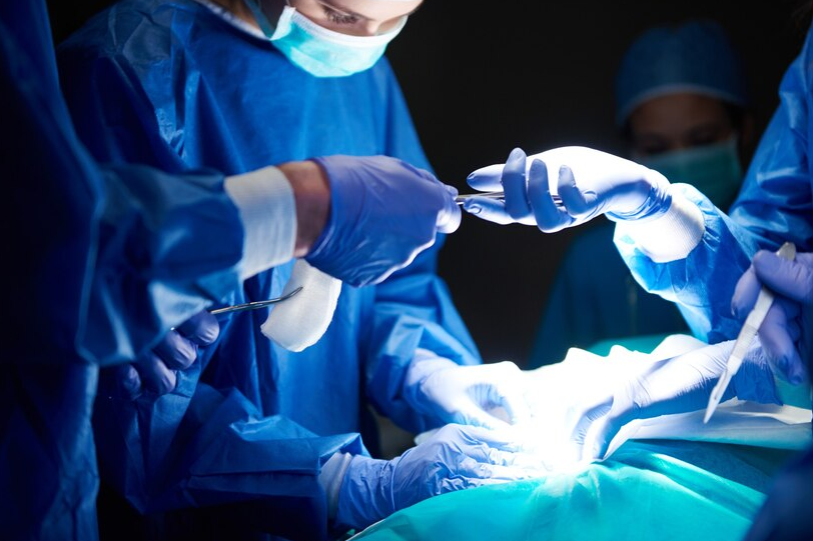
14 Jan Laparoscopic Fibroid Removal: A Minimally Invasive Solution for Women’s Health
Fibroids, also known as uterine leiomyomas, are noncancerous growths of the uterus that often appear during childbearing years. While many women with fibroids may not experience noticeable symptoms, for others, these growths can lead to various health issues. Laparoscopic fibroid removal, performed by experts such as Dr. Usha M Kumar, recognized as the best gynae laparoscopic surgeon in India, offers a minimally invasive solution to address fibroids and improve women’s health.
Understanding Fibroids:
Fibroids are growths of smooth muscle and connective tissue that can develop within the wall of the uterus, on the outer surface of the uterus, or even within the uterine cavity. They vary in size, ranging from small, seed-like formations to large masses that can distort the shape of the uterus. The exact cause of fibroids remains unclear, but factors such as hormonal fluctuations, genetic predisposition, and pregnancy-related hormones are believed to play a role in their development.
While many women may have fibroids without any noticeable symptoms, others may experience:
- Menstrual Changes: Heavier or prolonged periods, irregular menstrual cycles.
- Pelvic Pain and Pressure: Discomfort or pain in the pelvic area, often accompanied by a feeling of fullness.
- Frequent Urination: Enlarged fibroids can press against the bladder, causing a frequent need to urinate.
- Backache or Leg Pains: Pressure on nerves in the back due to large fibroids.
- Pain during Intercourse: Fibroids can cause pain or discomfort during sexual activity.
For women experiencing significant symptoms or fertility issues related to fibroids, laparoscopic fibroid removal can be a transformative solution.
Laparoscopic Fibroid Removal – A Minimally Invasive Approach:
Traditionally, the surgical removal of fibroids involved open abdominal procedures, often resulting in longer recovery times, increased pain, and a higher risk of complications. However, with advancements in medical technology, laparoscopic fibroid removal, also known as laparoscopic myomectomy, has become a preferred and effective option.
Dr. Usha M Kumar, renowned as the best gynae laparoscopic surgeon in India, explains the laparoscopic approach. “Laparoscopic myomectomy involves making small incisions in the abdominal wall through which a laparoscope and specialized instruments are inserted. The laparoscope provides a clear view of the pelvic organs, and the surgeon can precisely remove the fibroids with minimal impact on surrounding tissues.”
The benefits of laparoscopic fibroid removal include:
- Minimized Scarring: Small incisions result in minimal scarring compared to traditional open surgery, promoting a more aesthetic outcome.
- Faster Recovery: Reduced trauma to the body allows for quicker healing and a shorter recovery period.
- Less Pain: Patients often experience less postoperative pain compared to open surgery, leading to enhanced comfort during recovery.
- Lower Risk of Complications: The minimally invasive nature of laparoscopic myomectomy lowers the risk of complications, such as infection and excessive bleeding.
The Laparoscopic Fibroid Removal Procedure:
- Preoperative Evaluation: Before the procedure, a thorough evaluation is conducted to assess the size, number, and location of the fibroids. This information guides the surgical approach and ensures optimal outcomes.
- Anesthesia: Laparoscopic fibroid removal is performed under general anesthesia to ensure the patient’s comfort throughout the procedure.
- Small Incisions: Several small incisions, typically less than an inch in length, are made in the abdominal wall. These serve as entry points for the laparoscope and surgical instruments.
- Fibroid Removal: The laparoscope provides a magnified view of the uterus, allowing the surgeon to precisely locate and remove the fibroids. Specialized instruments facilitate the process while minimizing damage to surrounding tissues.
- Closure: After fibroid removal, the incisions are closed with sutures or surgical glue. The small size of the incisions contributes to minimized scarring.
Postoperative Care and Recovery:
Following laparoscopic fibroid removal, patients can expect a quicker recovery compared to traditional open surgery. Dr. Usha M Kumar emphasizes the importance of postoperative care. “Patients are typically discharged on the same day or within a day of the procedure. Pain management and specific instructions for resuming normal activities are provided. Most women can return to regular activities within a week, although strenuous exercise and heavy lifting should be avoided during the initial recovery phase.”
Regular follow-up appointments allow the surgeon to monitor the healing process and address any concerns or questions the patient may have.
Conclusion:
Laparoscopic fibroid removal, performed by skilled professionals like Dr. Usha M Kumar, represents a significant advancement in gynecological surgery. This minimally invasive approach offers women a tailored solution to address the challenges posed by fibroids while minimizing the impact on their overall well-being. As the best gynae laparoscopic surgeon in India, Dr. Usha M Kumar continues to contribute to women’s health by providing state-of-the-art, compassionate care that aligns with the evolving landscape of gynecological surgery.




Sorry, the comment form is closed at this time.